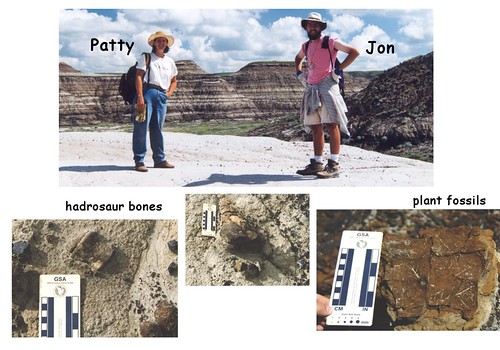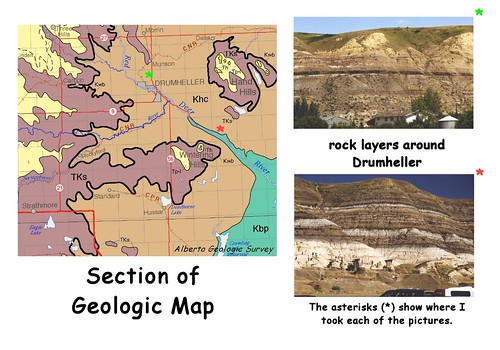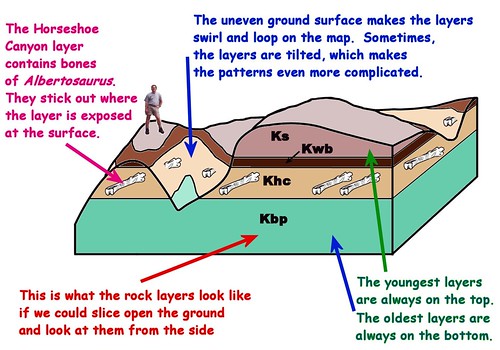Dr. Will on finding fossils in Horseshoe Canyon

How did I find fossils in the Horseshoe Canyon Formation?
Some years ago, I was a graduate student who needed a project. My advisors put me in contact with curators at the Royal Tyrrell Museum, who wanted to know if the stacking of sedimentary layers in the Horseshoe Canyon Formation followed a pattern. I spent two summers measuring the thickness of rock layers, noting which types of rocks they were and whether they contained fossils, along a 45-km stretch of the Red Deer River around Drumheller. What I learned was that the rock layers do follow a pattern, but the dinosaur fossils also follow a pattern.
I had a lot of help with the work, particularly during the fossil hunts. Jon and Patty, also paleontologists, helped me find and identify bones while we were out searching. We examined the records at the museum to locate places around the badlands that had not been collected before. Then we checked to find out who owned the land; if someone owned the land, we asked permission from the landowner before starting our fossil hunt on private property. We'd get all our gear together—hat, bugspray, gloves, water and lunch, first aid kit, raincoat, notebook, camera, and rock hammer—and drive out to the spot we'd chosen. Together, we made some important new discoveries, some of which I put in Picture #3 (above).
In one spot, we found a place where a very hard layer of sandstone had made a "bench"—a wide flat spot—exposing dozens of hadrosaur bones. The Museum later conducted a major excavation at this spot. Jon was particularly good at finding tyrannosaur teeth, which we needed for the chemistry study I described last time. Patty found a section of a whole dinosaur, bones all jumbled into a pile. I found a jaw from a baby tyrannosaur. Over the eleven weeks of our fossil hunts, Jon and Patty and I found hundreds of dinosaur bones. Our most important find was not a dinosaur at all, but a cluster of fossil leaves! One of the curators at the museum told me that dinosaurs are very common out there, but plant fossils are rare—and they are still collecting plants at that site today.


